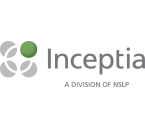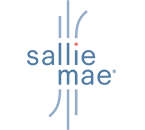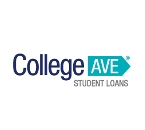A Little Nudge Goes a Long Way: Guiding Students Toward Responsible Borrowing, 8:30 - 9:30 am
By Erin Powers, Communications Staff
Behavioral science can help to explain why people sometimes make irrational money choices, even when they ought to know better, but understanding behavior can also help us positively move toward healthy, desired financial outcomes by using “nudges.” In this Tuesday morning session, presenters from Inceptia, Indiana University, and the State University of New York System Administration (SUNY) - Brockport, discussed the concept, ethics, and implications of Nudge theory.
A nudge, the presenters explained, is an action that alters someone’s behavior in a predictable way without prohibiting any options or significantly changing their economic incentives. “We need people to point us in the direction with help nudges; there are too many choices and we’re not experts,” presenter Carissa Uhlman of Inceptia explained. “We are all ‘choice architects,’” Uhlman said, explaining that according to subject matter expert Richard Thaler: “If anything you do influences the way people choose, then you are a choice architect.” Countless examples of choice architecture can be seen in the financial aid office, from the way an aid office structures its award letters to the decisions schools make about what day of the week or time of the week offices choose to send prompts or reminders to students.
The word itself is also a helpful acronym to help you remember how to put this theory into practice:
iNcentives — You must establish what’s in it for the person you’re trying to nudge toward a certain behavior. Why should they want to act on what you're nudging? What will they get if they do?
Understand Mappings — In order to be successful, you’ll need to get into the mindset of the person you’re trying to nudge. Try to see things from their perspective. Think about how things will be received by students.
Defaults — Use the status quo to your advantage. Meet students where they are rather than asking them to go above and beyond their comfort zone. For example, can you build something new into a process students are already utilizing rather than creating an extra, separate step for them to take?
Give feedback — Let people know how they’re doing.
Expect error — Understand that no matter how well you do, things can always go awry.
Structure complex choices — Make things easier on the person you’re trying to nudge by breaking down their options for them. That way once they experience a little bit of success they will be motivated to keep pushing forward.
These nudges don't always have to be complicated. "Sometimes a nudge can be just as simple as an ask," Uhlman said. "We are already nudging students whether we know it or not," she added, urging attendees to be more aware of and intentional with their nudging.
Nudges are a great way to increase financial literacy among students, presenters said, because nudges are helpful in instances where people are faced with making decisions that require expertise or that are not routine, particularly when future costs of the decision are uncertain. SUNY Brockport and Indiana University both noticed worrisome patterns or behaviors among their students and, using nudges, attempted to intervene to modify those behaviors.
At Brockport, administrators observed that their students had higher annual borrowing compared to other SUNY schools and that Brockport's students appeared to be routinely borrowing more than they needed. Brockport conducted a Cost of Attendance (COA) survey, offering the opportunity to win a $250 bookstore certificate as an incentive, and determined that while the budgets they had established for most of their cohorts was right on target, there was one cohort that was perpetually borrowing the full amount of loans offered to them even though they didn’t need the full amount of loans to pay for their COA.
To rectify this behavior, Brockport lowered budgets for this population and required students in the designated cohort who wanted budget increases to complete an online financial literacy course, complete a budgeting plan and submit it along with an appeal form with documentation of expenses to the financial aid office. The result? Unnecessary borrowing is going down for the target population, presumably because after walking through the steps and becoming more financial literate, students realized it was unwise to borrow more than truly needed. Indiana University saw similar success in response to their nudges.
Schools interested in utilizing the nudge theory to change student behavior on their campuses, may find these online tools useful:
• A Practitioner’s Guide to Nudging http://bit.ly/1gf3K8f
• Nudge Theory Toolkit http://bit.ly/1PBJHSM
• The Six Principles of Good Choice Architecture http://bit.ly/2nuLKmF
Publication Date: 6/27/2017












William C | 6/29/2017 10:56:25 AM
What Brockport is doing is fully compliant with an Federal regulations.
James P | 6/28/2017 12:25:28 PM
Is what Brockport is doing in line with federal regulations? A number of ideas which seem great to those of in the field are nixed by the feds.
You must be logged in to comment on this page.